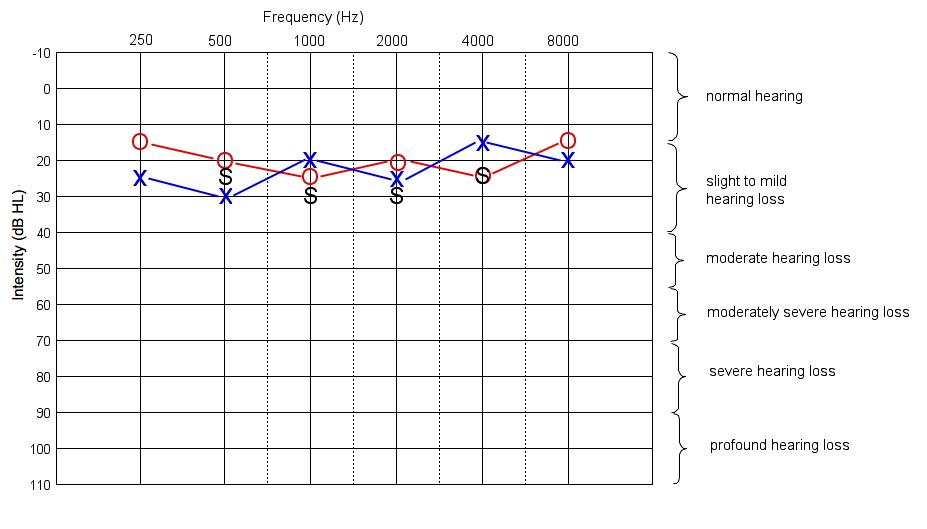An audiogram can be thought of as a picture of your child’s hearing. The audiogram shows the quietest level of sound your child can hear at each frequency (pitch) in each ear.
Here is a sample audiogram with the different categories of hearing loss severity:

What the numbers mean:
- Across the top of the graph there are numbers from 250 to 8000. These numbers (measured in Hz) represent the frequencies (pitches) of the sound presented to your child. They can be thought of as keys on a piano ranging from the bass notes (250 Hz) to the treble notes (8000 Hz).
- On the left side of the graph there are numbers from -10 to 110. These numbers (measured in dB) represent the intensity (loudness) of the sound presented.
Your audiologist is interested in how loud the sound has to be before your child responds. Put another way, your audiologist is measuring the softest sound your child can hear. The softest level at which your child can hear a sound is called the threshold.
What the symbols on the graph mean:
The symbols represent the quietest level your child responded to at each frequency (pitch) during the hearing test.
- The Xs are the responses for the left ear.
- The Os are the responses for the right ear.
- The Ss are the responses through the speakers (this provides information about how well your child hears when listening with both ears, or about the better hearing ear, if the ears don’t hear the same)
Definition of normal hearing:
The range for normal hearing is defined as hearing thresholds of -10 to 15 dB at all frequencies (0 to 20 dB when testing babies through the speakers).
Categories of hearing loss by severity:
-
Slight hearing loss is defined as hearing thresholds in the range 20 to 25 dB.
-
Mild hearing loss is defined as hearing thresholds in the range 26 to 40 dB.
-
Moderate hearing loss is defined as hearing thresholds in the range of 40-55 dB.
-
Moderately-severe hearing loss is defined as hearing thresholds in the range of 56-70 dB.
-
Severe hearing loss is defined as hearing thresholds in the range of 71-90 dB.
-
Profound hearing loss is defined as hearing thresholds above 90 dB.
Most children have hearing loss in more than one category. For example, your child might have better hearing in the low pitches than the high pitches. If this is the case, hearing loss might be described as falling under more than one category (e.g. a mild to moderately-severe hearing loss).
Download the pamphlet on How to Read Your Child's Audiogram (PDF).
